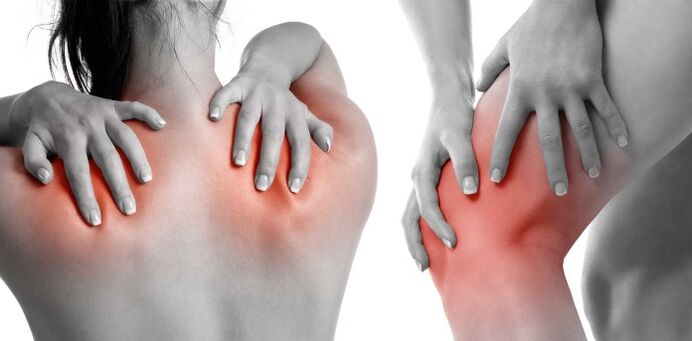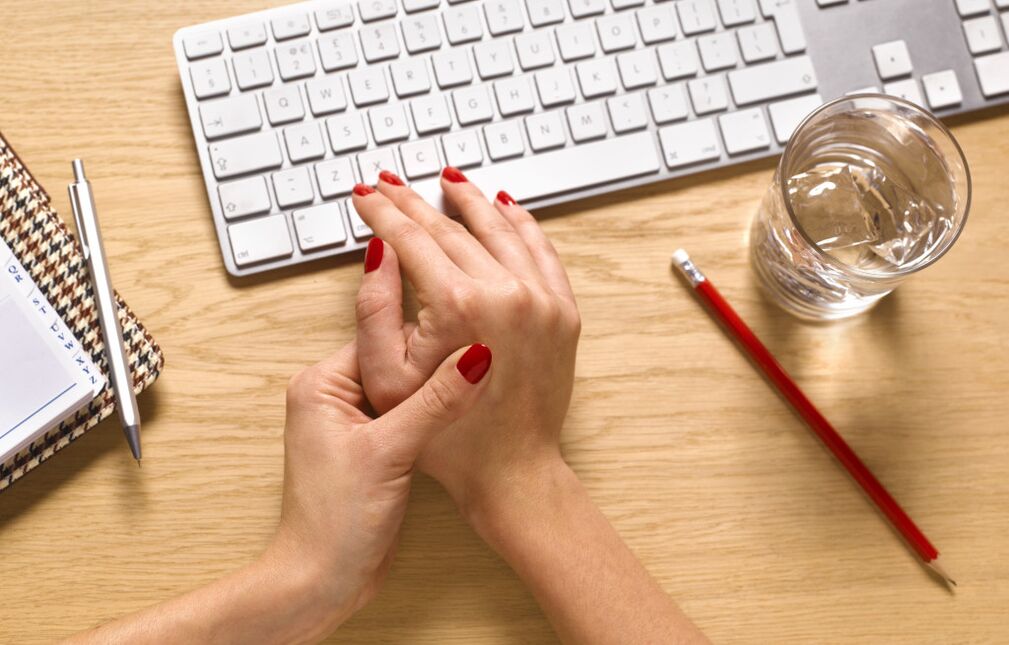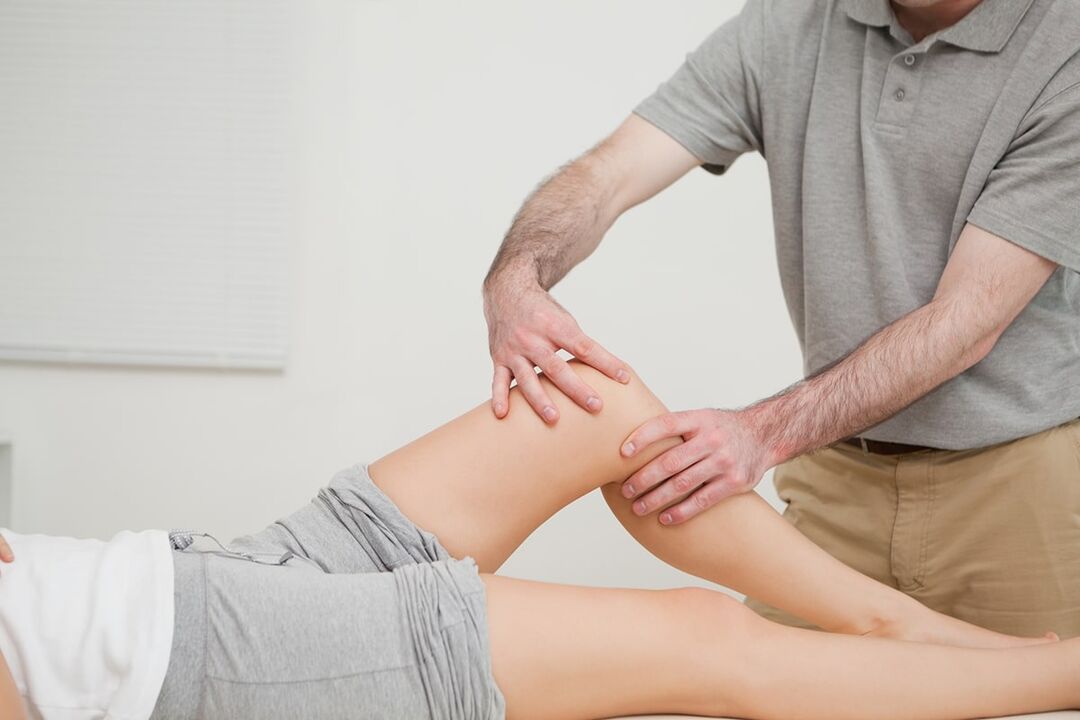One of the most common reasons why people seek medical attention is pain and joints. Perhaps there are no people who have not been affected by these problems, and with age, unfortunately, pain in the back and joints is more insistent.
One of the most common diseases of the musculoskeletal system is arthrosis. It is about it that we will tell you in this article.
Arthrosis is a degenerative-dystrophic chronic joint disease in which the joint cartilage, joint capsule gradually occurs. Bone tissue, directly under the porous cartilage, is unevenly thickened, the load compensation, ie the joint deformation.
In addition, this disease is called: arthritis or arthritis of osteoarthritis deformity, as the cartilage tissue initially causes an inflammatory process in the joint.
What is the difference between arthrosis between arthritis

These two diseases are often confused with each other because of the harmony of the names and because both arthrosis and arthritis affect the joints. At the same time, these are various diseases and, which is very important, they are treated in different ways.
Arthrosis is most commonly developed in old age (older than 45 years), with age -related joint deformity gradually.
On the contrary, arthritis is more often at a young age (up to 40 years). Of course, there are exceptions, for example, in the older person after cold or flu, arthritis may develop, or vice versa, seriously referred to by athletes in the light of physical activity, the knee joints are arthritis.
2% of the world's population suffers from various arthritis and often young people. About 10% of our planet suffer from arthrosis, and if young arthrosis is relatively rare, then the number of patients with arthrosis in old age increases. In the age group of 50, all third parties have these or other phenomena, and every second or other 70 years of age.
If only the joints suffer from arthrosis, and the whole body is not usually involved in the pathological process, then arthritis, on the contrary, the whole body enters the inflammatory process, and only "Icberg" is inflammatory with arthritis, as the internal organs are almost always affected (most often the heart, liver, kidneys, kidneys). A serious threat to the patient's life.
With arthritis, inflammation in the joints usually manifests their redness, swelling, severe pain that are not in a hurry to rest, and sometimes, on the contrary, enhances overnight.
With arthrosis, the pain is mainly only during movement or physical effort, while it may not be very severe (especially at the beginning of the disease). So people often start disease. In the second stage, the pain is manifested by a slight load, and the third - even during rest. However, unlike arthritis, it can be silent if the patient manages to take a convenient position.
With arthrosis, the affected joint area appears with a coarse dry crunch, which is caused by the destruction of the cartilage layer and the destruction of bone friction. The more the joint is destroyed, the stronger it becomes crunchy.
With arthrosis, the amplitude of movement in the affected joint is reduced, and arthritis is characterized by gravity throughout the body or joint.
Inflammation of the joints is most commonly caused by an immune system infection or failure (autoimmune process), less common arthritis indicates general metabolic disorder.
Types of arthrosis
Arthrosis is a whole group of joint diseases that have different origin but mechanisms of close development. Most often, arthrosis affects large joints.
In terms of localization, several types of arthrosis are distinguished: gontrosis - deformity of the knee osteoarosis, coxarthrosis - osteozularity of the thigh joint, deformity of the shoulder joint is the most severe types of arthrosis.
Arthrosis of small joints is less common, usually older people suffer.
There is often arthrosis of the joints of the foot.
Spondylarthrosis - Arthrosis of the spine joints (often spine disease).
Symptoms of arthrosis
The main clinical symptoms of arthrosis are pain in the joint and its mobility. Specific symptoms and their severity are determined at the stage of arthrosis and depends on the degree of destructive changes in the joint.
Causes of arthrosis
- Joint and bone injuries, microtumatization of joint tissue during excessive production or sports, obesity, mechanical damage to the joints during surgery, and even with disruption of positives or flat legs.
- Genetic disorders in the cartilage tissue of the joint, which results in accelerated destruction. These may be the inherent defects of the musculoskeletal system: dysplasia of the joint, flat legs or other defects, a hypermatic, which is the cause of trauma of certain sections of the cartilage tissue of the joints and, as a result, causes arthrosis. For example: Deformation of osteoarosis of the interphalalanced joints of the upper extremities is usually found in women and inherited by mothers.
- Autoimmune diseases (psoriasis, gut, rheumatoid arthrosis).
- Other joint diseases (acute and chronic arthritis, burstitis, synovitis and other inflammatory joint diseases of different etiologies can lead to the development of osteoarosis).
- Vascular diseases.
- Blood circulation disorders in the periarticular tissues that cause dystrophic changes in the joint (varicose veins that regulate endarteritis, atherosclerosis of the lower extremities, and all of us with such normal hypodynamia).
- Endocrine diseases, metabolic disorders, minerals deficiency, trace elements and vitamins cause changes in the composition of cartilage, joint fluid and bone tissue, which gradually lead to disruption of recovery processes and destroying the joints.
How arthrosis develops

Another arthrosis of body aging develops according to the following scheme. The process begins with circulatory disorders in the periosteum capillaries, resulting in impaired cartilage nutrition. Gradually, the cartilage is thinner, loses its elasticity, cracks on it, lost the smoothness of the articular surfaces, reducing the amount of synovial fluid, ensuring the movement of articular surfaces. As a result, pain and crunch appear during movement. Over time, the width of the joint is reduced, osteophytes (bone stoves) are formed on articular surfaces. Finally, the joint is deformed, the amplitude of its movements decreases.
This form of arthrosis is developed gradually for many years.
Other forms of arthrosis may develop according to various mechanisms (for example, subsequent traumatic arthrosis), but abnormal changes in the joint will be similar.
Treatment of arthrosis
If you are diagnosed with arthosis or osteoarthritis, you have difficult treatment, but it is very important not to give up and lose hope for a successful result.
In case of any pain in the joints, their functioning and the impairment of other symptoms, you should consult your doctor. A specialist who is involved in joint problems is a rheumatologist.
The main tasks of treatment are pain relief, restoration of affected joint structures (mainly cartilage) and joint motor function. Success can only be achieved with the timely beginning of therapy. If you start treatment for arthrosis at an early stage, it is not only possible to stop the development of the abnormal process, but also partially restore the destroyed cartilage.
If the cause of the disease is known, you should try to eliminate it. If there is an overweight body weight, you should lose weight. In case of metabolism or hormonal background disorders, you should apply forces to normalize it. In case of workers or sports loads, change the field of activity, not abuse of sports.
Choosing a drug is a doctor's task, you don't have to schedule them yourself. Most often, combinations of the following groups of medicines are used for treatment:
- Analgesics (analgesic);
- Hormonal and non -anti -anti -anti -anti -anti -remedies;
- Defenders (joints are fed and cartilage recovery).
Excess weight removal is the most important connection in arthrosis therapy, as excess body weight increases the load on pain not only during movement but also during rest. In patients who have been able to lose weight, the disease progresses more slowly than those who have not succeeded. However, the medal has a different side. If you put the disease on yourself, weight loss is unlikely. When the joint is very painful, even the simplest exercises will turn into torture.
Therefore, you need to act in several directions at once: Try to reduce weight, treat the underlying disease and change your lifestyle.
Defenders
All patients with arthrosis have a prescribed amount of groups from a group of groups that inhibit the destruction of the cartilage and even restore it. The composition of such medicines includes glucosamine and sulfate substances (or their combination) that promote cartilage moisture, increase its elasticity, improve nutrition and activate recovery processes. Such joints also have an analgesic effect, but this effect develops after some time after admission.
Treatment of folk remedies for arthrosis
From ancient times, folk remedies have been successfully used to treat arthrosis and arthritis. Their main task is to normalize metabolism, stimulate cartilage regenerative processes, cleanse toxins, eliminate inflammatory processes in the joints and peristful tissues, eliminate pain and swelling. These remedies include:
Sables - Relieves inflammation in the joint, reduces pain and swelling in the joints.
Dandelion Root - Improves joint elasticity.
IVA bark contains lingen, tannins, salted glycoside, ascorbic acid, anthocyanids, pectins.
Field Cavalry - Helps restore the cartilage tissue of the joints.
Birch leaves - as tinctures remove uric acid from the kidneys and joints, and externally applied to the bath in steam and massage.
Timyan - promotes collagen synthesis.
Forest strawberries - Reduces tissue swelling around the joints.

Series -has anti -anti -action, baths that have a series, improve blood circulation in the per -Human tissues.
Ointments from juniper berries, nettle leaves and beef oil, to relieve joint pain.
Ointment, made of cavalry and oil jelly, relieves pain and reduces the inflammatory process in the joint.
Jerusalem Artichoke - For the preparation of the bathroom to relieve inflammation in the joint and reduce pain.
Burders - Improve metabolism and remove salts from the joints.
Herbal tea thyme, lingonberries, pink, oregano and mint - to remove toxins and toxins from the body.
Golden mustache tincture for oral administration
Cut 10 - 15 joints, grate them along and down, pour 0, 5 liters of vodka and insist in a dark place for two weeks.
Apply one tablespoon 3 times a day, one hour before eating. You can't drink or jam. The treatment is 7 - 10 days.
The same infusion can be used as a compress that is located on the joint.
The golden mustache
This ointment is prepared with oil jelly, baby cream or interior fat. Grate the golden mustache leaves and stem, sprinkle with juice and mix with cream or fat in a ratio of 1: 3. Keep the refrigerator. It is used for arthrosis and arthritis for joints.
Honey with aspirin with joint pain
Transfer 10 tablets of acetylsalicylic acid (aspirin) to powder and mix well with 200 g of honey (preferably liquid). Put the mixture in a warm place for 10 days, stir periodically. Lubricate the joints with the resulting tool, then cover with polyethylene and wrap it with a wool scarf. Leave the compression all night. Do procedures before the terrain comes.
Under the influence of this device, light redness and burning sensation may appear, but this effect passes over time. This recipe is not suitable for people with beekeeping products or aspirin allergies.
















































